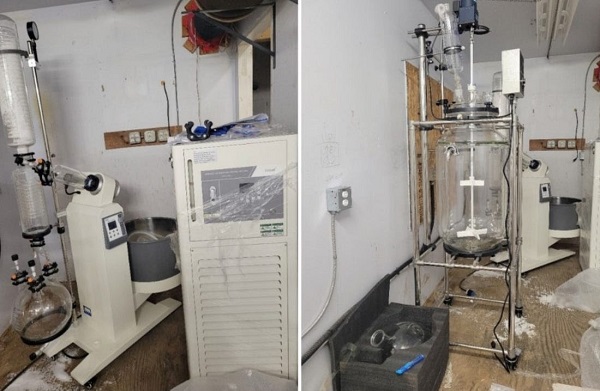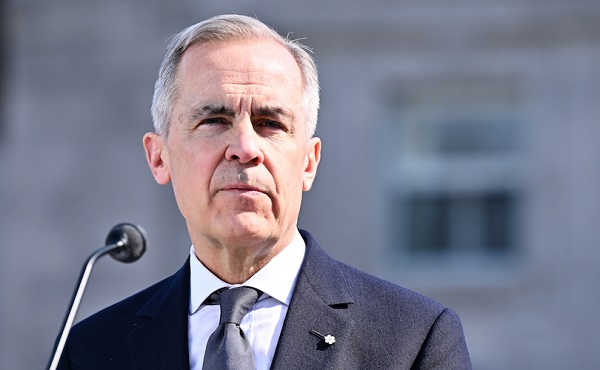Business
Changing of the Tides – How One Alberta Company Is Driving Hydrokinetic Power

The energy conversation has been a polarized debate for years and continues to hit headlines. The clean energy industry is driven by forward-thinking individuals who have one common goal, transitioning from traditional energy sources to a more sustainable form of energy. Now in 2020, we have more oil than we know what to do with, an unprecedented amount of unused facilities that require cleanup, and jobs being lost daily. We exist in a time where competition drives innovation, demonstrating proof of concept is essential to drive investment and still, unable to see eye to eye for a common approach. Let me ask you this, is it problematic for us as a society to hold onto previous conceptions of clean energy projects, regardless of what type?

Jupiter Hydro was founded in September 2010 by Co-CEO Ross Sinclaire in Calgary, Alberta. Their main focus is in-stream hydrokinetic power generation. Co-Ceo Bob Knight joined the team later in their development. If you have read into hydropower in the past, you may be aware of this type of power generation. Jupiter Hydro has taken the benefits of traditional hydropower and combined their unique technology to produce a far more cost-effective and sustainable form of hydrokinetic power generation.
Like any new technology that works to produce power in a non-traditional method, Jupiter Hydro has gone through three phases over a decade that has brought them a unique opportunity in Nova Scotia’s Bay of Fundy scheduled for later in 2020. Beginning with testing their hypothesis, proving the theory of generating rotational power utilizing an Archimedes screw presented to fluid flow at an angle was tested in an irrigation channel. With promise in their theory, they move to test their methodology developed to quantify produced power was developed using a rudimentary test tank and 3D printed screws. Mounting systems were developed and fabrications were created with cost-effective materials. In 2012, testing at the University of Calgary’s test tank began to quantify torque characteristics and confirmed blade pitch and presentation characteristics. Both the horizontal orientation and longitudinal orientation of the screw were tested, giving insight into a highly effective angle for their Archimedes screw.

Open Water Testing
Crucial for any proof of concept in hydrokinetic power generation, Jupiter Hydro began their open water testing in 2013 in the Fraser River in BC. Early tests allowed discrepancies to be addressed with submerged generators and confirmed scalability for the technology for the team. Their second open water test addressed the longitudinal placement of their Archimedes screw while testing a swing arm in open water. With support from the Canadian Hydrokinetic Turbine Test Center, they had their third and fourth test at the facility to demonstrate the technology to identify flow clearances for their swing arm. They recorded nearly 50% efficiency and formed the basis of their current design for the upcoming Bay of Fundy project.

Defining In-Stream Hydrokinetics
In-stream hydrokinetics can be defined as harnessing the natural flow of water to provide rotational power. “In-stream” means that no containment or diversions are required, meaning that obstruction of the water flow is not required; be it a river, dam outflow, canal, or tidal flow. No dams or penstocks are required, and water flow is not restricted. If we consider that there are over 8500 named rivers in Canada according to the WWF, with the addition of ocean currents or any source of flowing water, the resources are huge for this technology.
Key Innovation
If we visit the pros and cons that have been put on traditional hydro, we tend to lie on the outstanding cons that have given the industry a black eye over the last decade. As mentioned previously, competition drives innovation, to which Jupiter Hydro has adapted previous technology with a new methodology to produce a new in-stream power generation. Through multiple test phases and focusing on being cost-effective, they have created patented technology to produce power utilizing the 2,000 year old Archimedes screw with a pitch of 60% of the diameter and angled at 30 degrees to the flow to produce high torque power from the in-stream flow. Traditionally, hydropower would require a permanent infrastructure and there is a risk for large scale remediation. Jupiter Hydro does not require any permanent infrastructure and thus they do not require any remediation from environmental disturbance.

Environmental Impact
With the majority of power generating technologies, lowering the environmental impact can be one of the prominent challenges even for clean energy. If we address the main environmental concerns with hydropower, it consists of concerns of remediation of land, impacts on fish, sourcing of materials, and noise pollution. Jupiter Hydro has effectively addressed these concerns with mitigating the risk for potential investors and the societal impact of driving clean energy into the future. They have the ability to provide remote sites with dependable power without the need for extensive shore infrastructure or changes to the channel flow. The technology can provide clean power in areas historically powered by diesel generators or bio-mass. Their system in rivers can provide “base line” dispatchable power, one of the key requirements for a 100% renewable energy system.
Bay of Fundy Project
On July 3, 2019 Jupiter Hydro Inc. was granted a 2 MW demonstration permit and Power Purchase Agreement (PPA) in the Bay of Fundy by the Nova Scotia Government. This area has seen other tidal power companies like Cape Sharp Tidal and Minas Tidal and have attempted to crack into the Bay of Fundy’s 2,500-megawatt potential. The terms for Jupiter Hydro is for three sets of 5 years, totaling a 15-year project to be launched later in the year. In the image below you can see their in-stream hydrokinetic tidal platform that will be used in the 2 MW project.

Due to issues relating to the ongoing pandemic, the date of this project remains currently unknown. We look forward to future updates from Jupiter Hydro and their success in the Bay of Fundy. Nova Scotia hit a milestone last year for reaching 30% of its energy produced by renewable sources. They continue to be a key driver for this industry.
“Energy that doesn’t cost the earth”
If you would like to learn more about Jupiter Hydro, check out their website here.
For more stories, visit Todayville Calgary
(This article was originally published on May 4, 2020.)
Internet
US government gave $22 million to nonprofit teaching teens about sex toys: report

From LifeSiteNews
The Center for Innovative Public Health Research’s website suggests teenage girls make their ‘own decisions’ about sex and not let their parents know if they don’t want to.
For almost a decade, the U.S. government funded a group that actively works to teach kids how to use sex toys and then keep them hidden from their parents to the tune of $22 million.
According to investigative reporter Hannah Grossman at the Manhattan Institute, The Center for Innovative Public Health Research (CIPHR) has been educating minors about sex toys with public funds.
Records show that the millions given to the group since 2016, according to its website, go toward “health education programs” that “promote positive human development.”
However, the actual contents of the programs, as can be seen from comments from CIPHR CEO Michele Ybarra, seem to suggest that its idea of “human” development is skewed toward radical sex education doctrine.
In 2017, CIPHR launched Girl2Girl, which is funded by federal money to promote “sex-ed program just for teen girls who are into girls.” Its website lets users, who are girls between ages 14 and 16, sign up for “daily text messages … about things like sex with girls and boys.”
The actual content of some of the messages is very concerning. Its website notes that some of the texts talk about “lube and sex toys” as well as “the different types of sex and ways to increase pleasure.”
The website actively calls upon teenage girls to make their “own decisions” and not let their parents know if they don’t want to.
Grossman shared a video clip on X of Ybarra explaining how they educate minors about the use of “sex toys” and dealing with their parents if they are found out.
The clip, from a 2022 Brown University webinar, shows Ybarra telling researchers how to prepare “young person(s)” for her research.
She said if they are doing “focus groups,” she will ask them, “Okay, so what happens if somebody comes into the room and sees words like penis and sex toys on your screen — on your computer screen or on your phone? What if it’s your mom?’”
In 2023, CIPHR launched Transcendent Health, which is a sex-education program for minors who are gender confused. This initiative received $1.3 million of federal grant money that expired last month.
Grossman observed that the federal government “should not fund programs that send sexually explicit messages to minors and encourage them to conceal these communications from parents.”
She noted that in order to protect children and “prevent further harm,” U.S. President Donald Trump’s Department of Health and Human Services “should immediately cancel CIPHR’s active contract and deny its future grant applications.”
“By doing so, the Trump administration can send a clear message: Taxpayers will no longer foot the bill for perverted ‘research’ projects,” she noted.
The Trump administration has thus far, through the Department of Government Efficiency (DOGE), exposed billions in government waste and fraud. Many such uses of taxpayer dollars are currently under review by the administration, including pro-abortion and pro-censorship activity through USAID, “Diversity, Equity, and Inclusion and neo-Marxist class warfare propaganda” through the National Science Foundation, and billions to left-wing “green energy” nonprofits through the Environmental Protection Agency.
Business
Canadian Police Raid Sophisticated Vancouver Fentanyl Labs, But Insist Millions of Pills Not Destined for U.S.

 Sam Cooper
Sam Cooper
Mounties say labs outfitted with high-grade chemistry equipment and a trained chemist reveal transnational crime groups are advancing in technical sophistication and drug production capacity
Amid a growing trade war between Washington and Beijing, Canada—targeted alongside Mexico and China for special tariffs related to Chinese fentanyl supply chains—has dismantled a sophisticated network of fentanyl labs across British Columbia and arrested an academic lab chemist, the RCMP said Thursday.
At a press conference in Vancouver, senior investigators stood behind seized lab equipment and fentanyl supplies, telling reporters the operation had prevented millions of potentially lethal pills from reaching the streets.
“This interdiction has prevented several million potentially lethal doses of fentanyl from being produced and distributed across Canada,” said Cpl. Arash Seyed. But the presence of commercial-grade laboratory equipment at each of the sites—paired with the arrest of a suspect believed to have formal training in chemistry—signals an evolution in the capabilities of organized crime networks, with “progressively enhanced scientific and technical expertise among transnational organized crime groups involved in the production and distribution of illicit drugs,” Seyed added.
This investigation is ongoing, while the seized drugs, precursor chemicals, and other evidence continue to be processed, police said.
Recent Canadian data confirms the country has become an exporter of fentanyl, and experts identify British Columbia as the epicenter of clandestine labs supplied by Chinese precursors and linked to Mexican cartel distributors upstream.
In a statement that appears politically responsive to the evolving Trump trade threats, Assistant Commissioner David Teboul said, “There continues to be no evidence, in this case and others, that these labs are producing fentanyl for exportation into the United States.”
In late March, during coordinated raids across the suburban municipalities of Pitt Meadows, Mission, Aldergrove, Langley, and Richmond, investigators took down three clandestine fentanyl production sites.
The labs were described by the RCMP as “equipped with specialized chemical processing equipment often found in academic and professional research facilities.” Photos released by authorities show stainless steel reaction vessels, industrial filters, and what appear to be commercial-scale tablet presses and drying trays—pointing to mass production capabilities.
The takedown comes as Canada finds itself in the crosshairs of intensifying geopolitical tension.
Fentanyl remains the leading cause of drug-related deaths in Canada, with toxic supply chains increasingly linked to hybrid transnational networks involving Chinese chemical brokers and domestic Canadian producers.
RCMP said the sprawling B.C. lab probe was launched in the summer of 2023, with teams initiating an investigation into the importation of unregulated chemicals and commercial laboratory equipment that could be used for synthesizing illicit drugs including fentanyl, MDMA, and GHB.
The Bureau is a reader-supported publication.
To receive new posts and support my work, consider becoming a free or paid subscriber.
Invite your friends and earn rewards
-

 2025 Federal Election1 day ago
2025 Federal Election1 day agoRCMP memo warns of Chinese interference on Canadian university campuses to affect election
-

 2025 Federal Election2 days ago
2025 Federal Election2 days agoConservative Party urges investigation into Carney plan to spend $1 billion on heat pumps
-

 Alberta2 days ago
Alberta2 days agoAlberta takes big step towards shorter wait times and higher quality health care
-

 2025 Federal Election2 days ago
2025 Federal Election2 days agoFifty Shades of Mark Carney
-

 2025 Federal Election21 hours ago
2025 Federal Election21 hours agoResearchers Link China’s Intelligence and Elite Influence Arms to B.C. Government, Liberal Party, and Trudeau-Appointed Senator
-

 Business2 days ago
Business2 days agoTrump raises China tariffs to 125%, announces 90-day pause for countries who’ve reached out to negotiate
-

 2025 Federal Election2 days ago
2025 Federal Election2 days agoCorporate Media Isn’t Reporting on Foreign Interference—It’s Covering for It
-

 2025 Federal Election1 day ago
2025 Federal Election1 day agoThe status quo in Canadian politics isn’t sustainable for national unity






